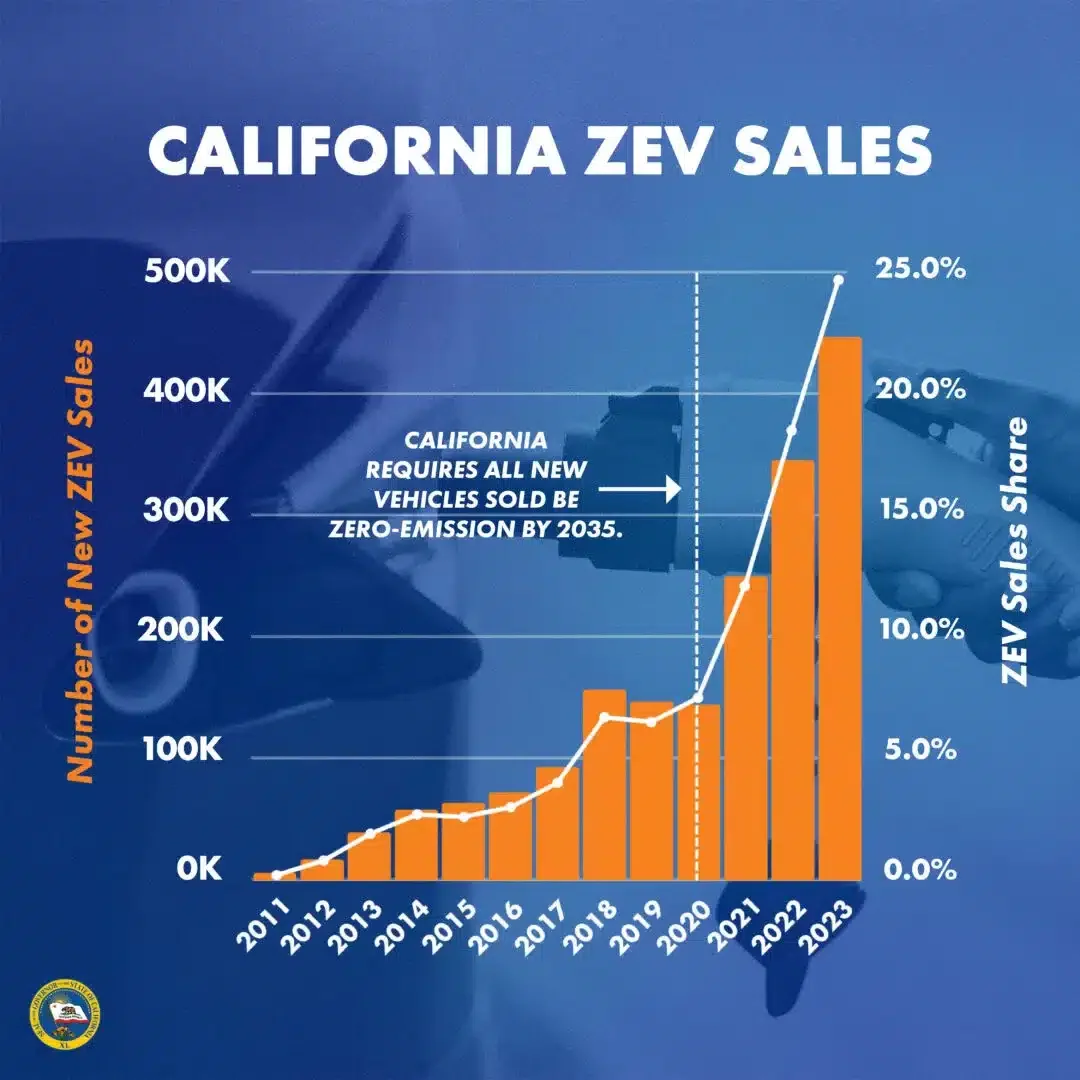California has made significant strides in its emission reduction journey while simultaneously expanding its economy, serving as a model for other states to follow in the energy transition. However, the state faces a challenging task in meeting its climate goal of cutting emissions by 40% from 1990 levels by 2030.
Accelerating Emissions Reduction: California’s Urgent Call to Action
According to a recent report by the San Francisco think tank Next10 and Los Angeles consulting firm Beacon Economics, California needs to accelerate its efforts to achieve deeper levels of decarbonization by the end of the decade.
The state must nearly triple its pace of annual emissions reductions to reach the 2030 target. This is especially crucial after its climate progress was temporarily stalled by the economic rebound following pandemic lockdowns.
The report suggests that California has to reduce emissions by an annual rate of 4.6% between 2022 and 2030. In comparison, the state has achieved an average rate of 1.5% between 2010 and 2021.
California is recognized as a leader in climate policy, technology, and renewable energy, but its performance in emissions reduction falls short.
The state’s greenhouse gas emissions increased by 3.4% in 2021, reaching 381.3 million metric tons of CO2 equivalent. This is primarily due to increases in the transportation and power sectors’ emissions, underscoring the need for intensified reduction efforts.
The report’s author and research manager at Beacon Economics, Stafford Nichols, noted that the rate of emission reduction has slowed since 2015-2016. He further emphasized the urgency for California to regain momentum in its climate action initiatives.
“While California is moving in the right direction in many ways, renewable electricity generation must greatly increase in the coming years in order to reach the state’s goal… we need to double the speed we are adding renewables to our power mix, from 4.3% per year to 8.7% per year.”
In October last year, the state enacted the country’s first-of-its-kind climate disclosure rule. It calls on businesses to report on their GHG emissions and climate-related financial risks.
California also banned the sale of gas-powered lawn care equipment according to a regulation that phases out small, off-road engines.
Powering Progress Toward a Green Grid
Transitioning to a greener grid is a strategic imperative for California as it grapples with rising emissions in its electric power sector. The sector saw a 3.5% increase from 2019 to 2021, primarily driven by in-state generation.
The power sector, ranking as the state’s 3rd-largest emitter behind transportation and industry, holds strategic significance in California’s efforts to decarbonize other sectors of its economy.
As California aims to electrify transportation, the adoption of zero-emission electric vehicles (ZEVs) has been instrumental.
In 2023, EVs accounted for around one-quarter of all new passenger vehicles sold in California. The state experienced a significant increase of 61.7% in new light-duty electric vehicle sales across all classes in 2022 compared to the previous year.
Remarkably, California achieved its 2025 goal of having 1.5 million ZEVs on the road two years ahead of schedule in April 2023. With an average annual increase in sales of 25.6% from 2018 to 2023, the state is projected to meet its 2030 target of 5 million ZEVs one year earlier than planned.

The state’s electrical grid, however, sources 50% of its power from fossil fuels, mostly natural gas. Thus, the reliance of EVs on this grid shows the urgent need to transition to a cleaner energy mix.
Nationwide, the U.S. is unleashing the power of energy storage to address the rising EV adoption across the nation. California led the installations of new large-scale battery capacity in 2023, with 8,179 MW of operating batteries.
California’s Ambitious Targets and Grid Expansion Strategy
California is leveraging the rapid advancement of battery storage technology to include more variable renewable energy sources such as solar. This is crucial for ensuring grid reliability, especially considering the intermittency of renewable resources.
According to S&P Global data, California’s renewables portfolio standard mandates that solar, wind, geothermal, small-scale hydropower, and other eligible sources cover 44% of retail sales by 2024. That represents an increase of 52% by 2027 and 60% by 2030. Additionally, California aims to achieve the following reliance on renewables and other carbon-free sources:
- 90% by 2035,
- 95% by 2040, and
- 100% by 2045.
Achieving these bold targets entails expanding the grid infrastructure and investing in new transmission lines to accommodate cleaner energy sources. It would also be elemental in supporting the electrification of transportation and building sectors.
However, rising electricity prices pose a significant challenge to the state’s decarbonization goals. Regulators are legislators are exploring different ways to address this concern.
One proposed option is to extend California’s cap-and-trade program, established a decade ago, to generate additional revenue for energy bill relief rather than primarily funding climate initiatives. However, skeptics argue that this proposal carries potential pitfalls and its effectiveness remains questionable.
Despite setbacks, the state’s ambitious targets and innovative strategies signal a resilient commitment to combatting climate change. With concerted efforts to accelerate emissions reductions, transition to a greener grid, and expand renewable energy sources, California continues to inspire as a leader in climate action.


